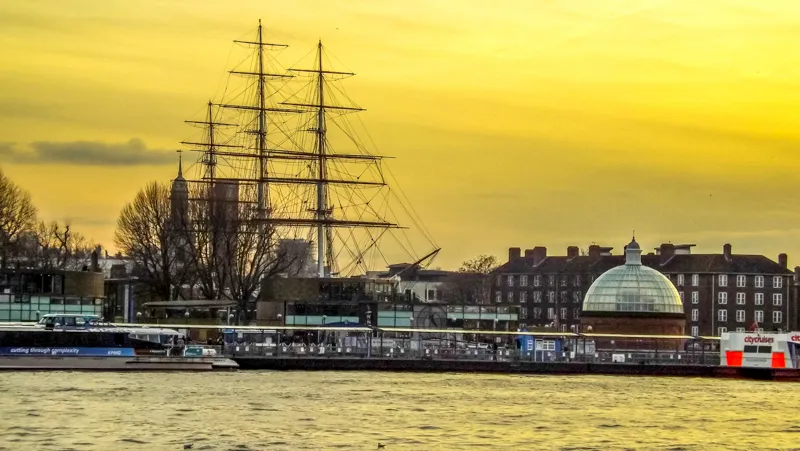
Exploring the Royal Borough of Greenwich takes a full day, preferably on a sunny day. When I lived in London, Greenwich was in my neighbourhood. I spent a lot of time walking the old Royal hunting grounds and the landmark buildings in London's south-east suburbs.
Here are my favourite places in Greenwich including wildlife, witches and walking. Enjoy the exercise and history.
Greenwich Foot Tunnel (1902) via a metal stair case or elevator, walk under the River Thames to the Island Gardens. The view looking back at Greenwich is similar to the 1752 painting by the famous city skyline Italian painter Canalotto. Although today the most likely water vessel to be seen is the regular passenger ferry.
The panorama from the shady garden spans from Deptford, Cutty Sark, Old Royal Naval College buildings, Greenwich Power Station, East Greenwich Gasworks with the O2 arena around the corner.
At the Isle of Dog end of the tunnel, wall reinforcement can be seen after damage from a World War II bomb.
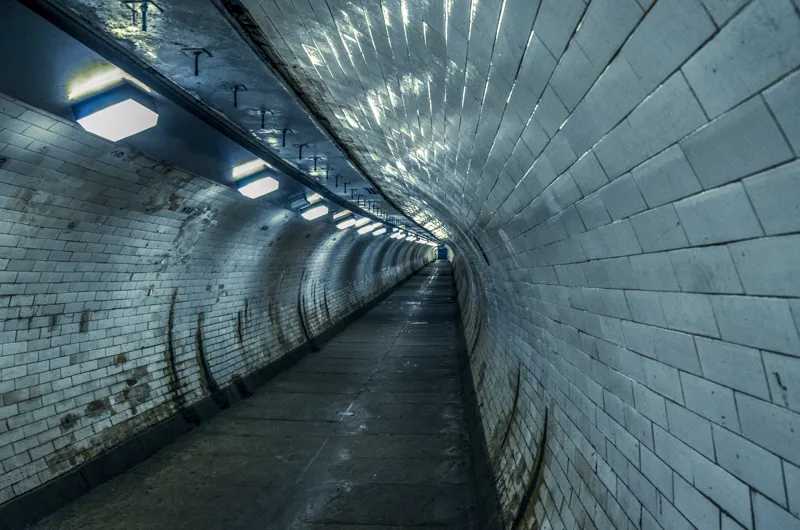
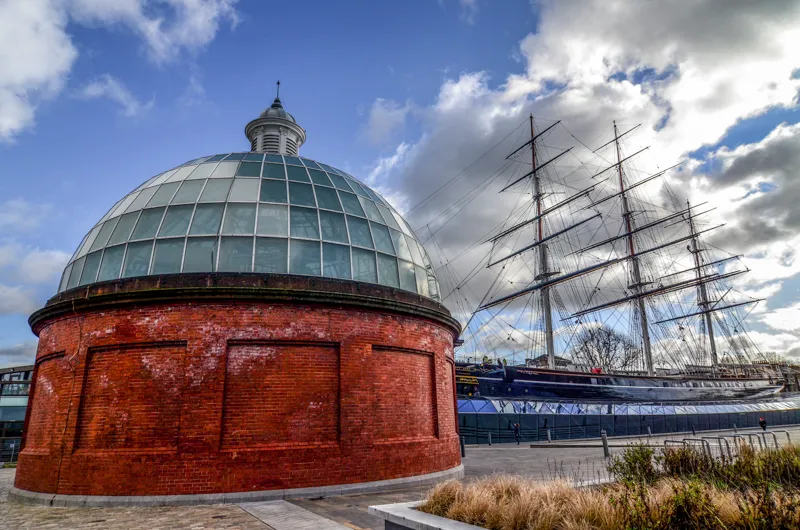
Dome over the Greenwich tunnel entrance with Cutty Sark in the background
The Cutty Sark is a 250-year-old sailing ship that used transport tea from China. It is free to look at from above but there is a ticket price to go inside for the exhibition. Look up for the witch holding a horse tail on the ships figurehead. This is based on the Robert Burns poem, “Tam o'Shanter” where the ship got its name from.
The the left is Discover Greenwich information centre. This is no ordinary brochure pick up stop. Discover Greenwich is like a small museum with historical artifacts such as a 16th Century witches brew bottle containing 250ml of smokers urine, 12 iron nails, 7 bronze pins, 8 pieces of nail clippings and dark human hair with lice. During recent street excavations the bottle was found.
Walk around the Neo-Classical Old Royal Naval College and once Navel Hospital. Now the University of Greenwich, this Christopher Wren masterpiece was finished in 1712 on the site of a demolished Royal Palace where Tudor Kings and Queens were born.
Under one dome is an entrance to the Painted Hall. In 1805 Horatio Nelson lay in state here for two days pickled in brandy after his death in the Battle of Trafalgar. It is free to admire and photograph the ceiling painting which took 19 years to complete.


The Maritime Museum has a lot to take in about the British Empire navigators, traders, explorers, slave trade and navy. One of the main features on display is Horatio Nelson's Trafalgar jacket with the fatal bullet hole.
Next door is Queens House (1616). Now a badly lit art gallery with paintings from Gainsborough, Turner and Hogarth. If you have plenty of time it is worth a quick visit. I love art galleries but the lighting should be improved.

At the rear entrance of the Maritime Museum
Greenwich Park is the oldest enclosed Royal Park with links to royalty for almost 1000 years. A walk around the park has rewarding views of the London and Canary Wharf skyline. It is definitely one of my favourite spots in London where you can escape people and take a break untroubled.

One tree hill and Canary Wharf
The Queen Elizabeth Oak is over 700 years old and was toppled in 1991 by a rainstorm. Elizabeth I used to play in the tree as a child. Now it is a squirrel play area.

Grass mounds are all that remains of a 70 AD Roman Temple.
The walk to the far left top end of the park is worth it to see the deer enclosure. Once the park was a Royal hunting ground and the deer are here as a memory of the hunting tradition.
An abundance of cheeky squirrels live near the gates to Blackheath, and all over the park in the quieter spots.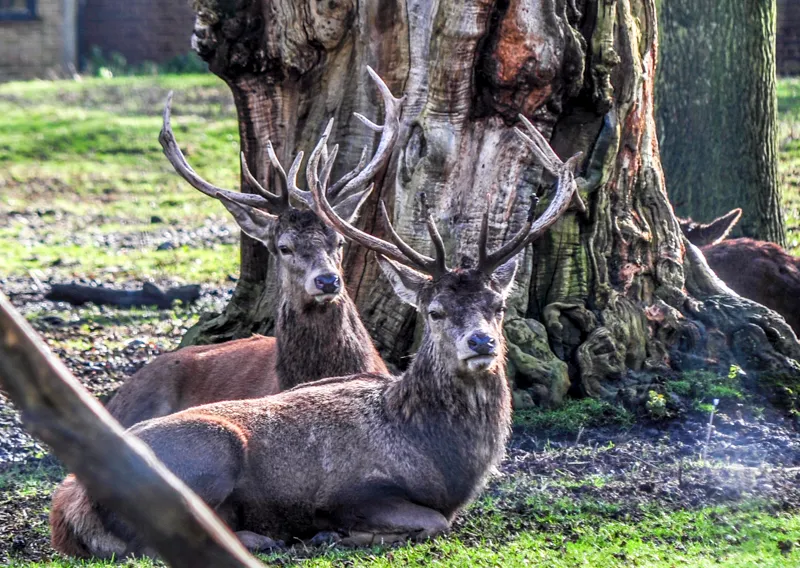
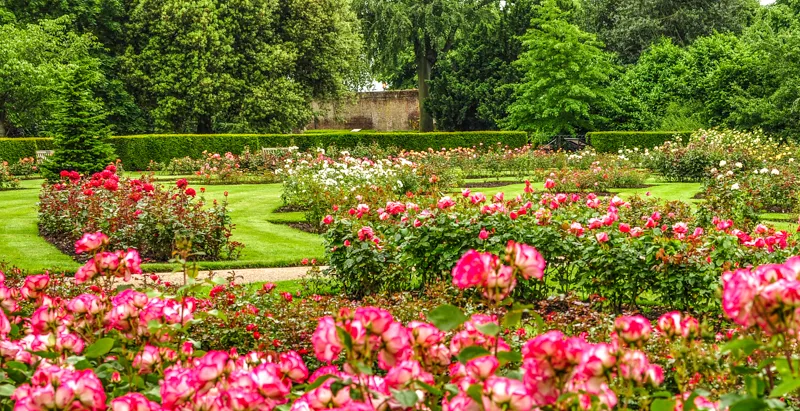
In the top far right end behind the Ranger's House is a rose garden
A road cuts through the park. At the far end the spire of All Saints, Blackheath stands tall; at the other end is the much photographed view of Canary Wharf and the war damaged statue of General James Wolfe. In the 1700's he was the commander of the British Forces and is buried at the nearby St Alfege Church. The onion dome of the Royal Observatory and the Prime Meridian line is here where you can straddle East and West hemispheres. The Observatory has a ticket price to enter but you can take photos on the continuing line on the ground outside the fence.
Best time to be here is at 12:58pm when the red time ball is raised and dropped at 1pm. This was once used to help set the maritime clocks on the ships in the River Thames.

Time ball is up and ready to drop
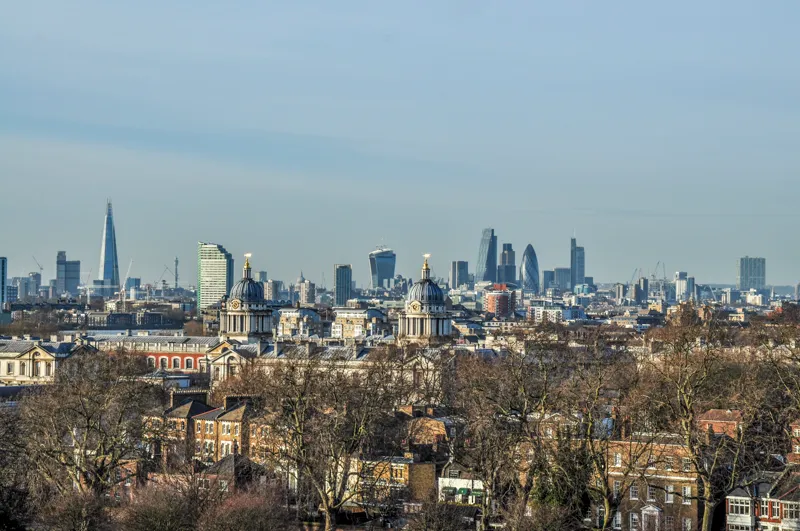
The view of London from the Royal Observatory
Walking down to Greenwich village, look for the community herb garden left of the gilded St Marys Gate.
The first left outside the gate is Nevada Street and Heaps Sausage Cafe. A traditional British meal can be had here at reasonable price for the quality. Heaps has been so successful that another store has recently opened across from the Cutty Sark DLR station.
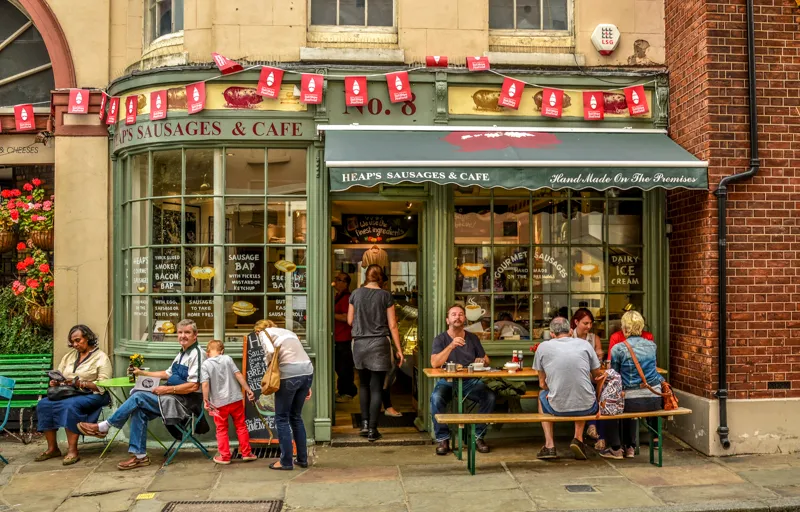
There are a few expensive pubs to have a drink in Greenwich. The Victorian-era Trafalgar Tavern is hard to beat on the River Thames next to the Old Naval College. Follow the path in front of the College. There is a Horatio Nelson statue outside. Greenwich's mascot as there is so many references to him here.
Getting there: Docklands Light Rail are driverless trains and my favoured way to travel to Greenwich. DLR from Bank to Island Gardens station to begin at the tunnel. Return via Cutty Sark DLR station.
More info at http://www.visitgreenwich.org.uk/
All photos taken by myself.